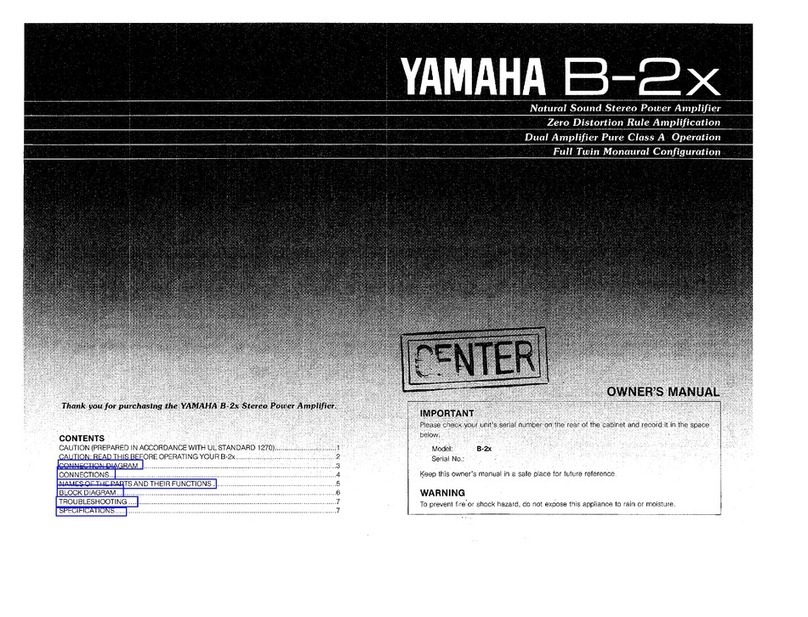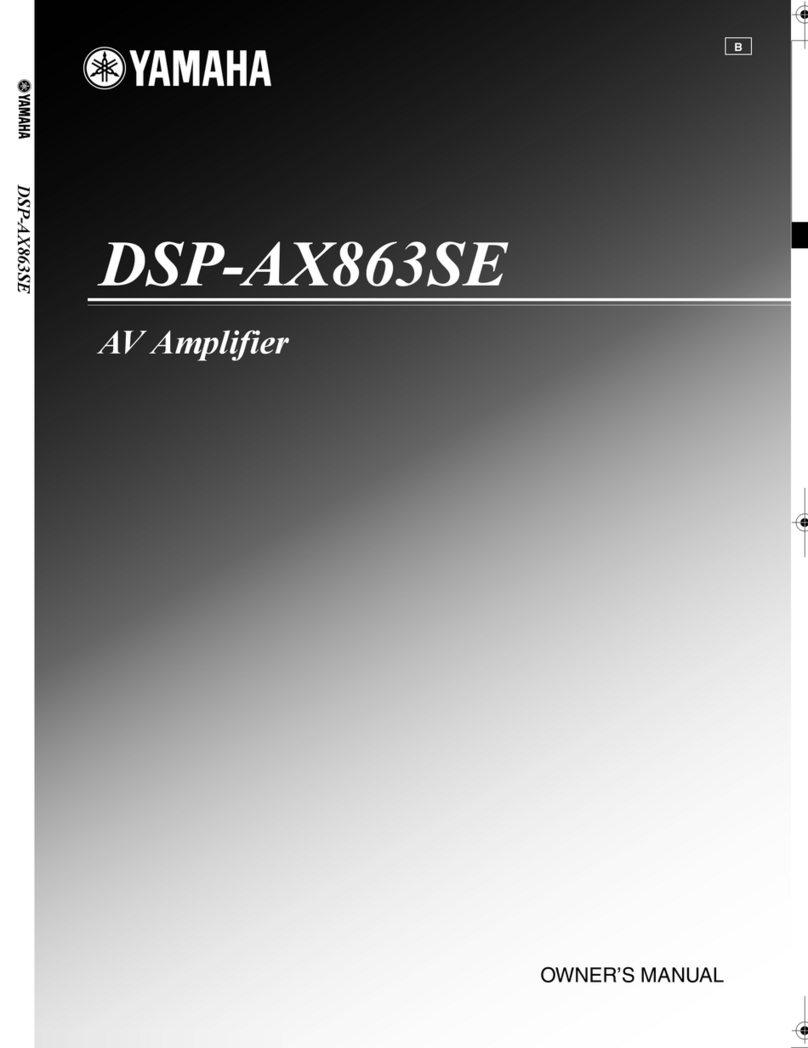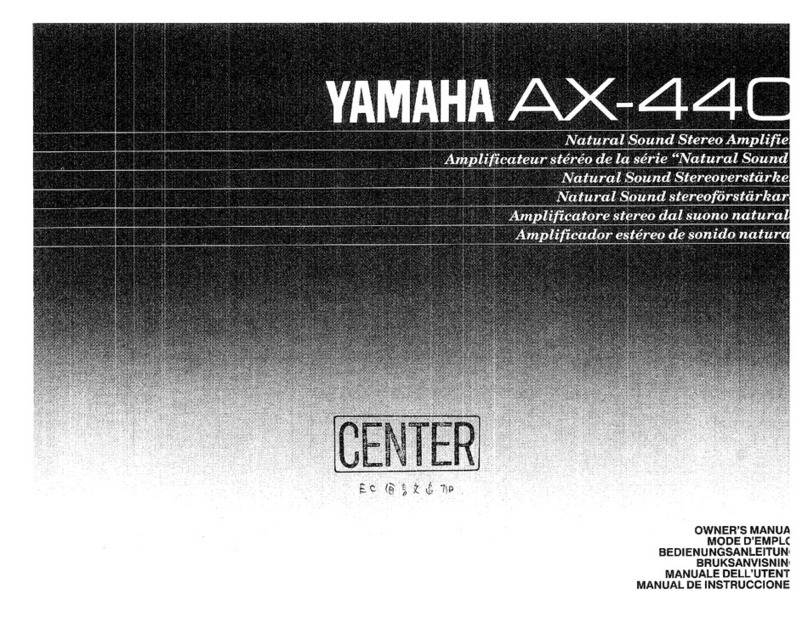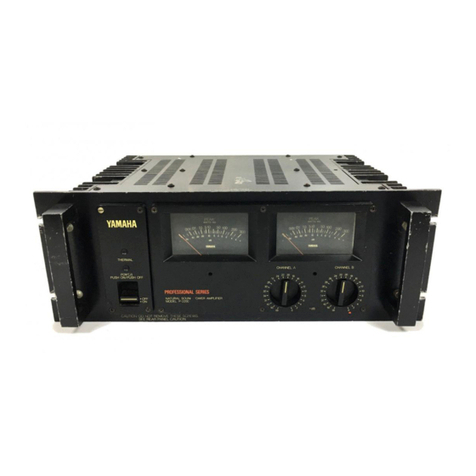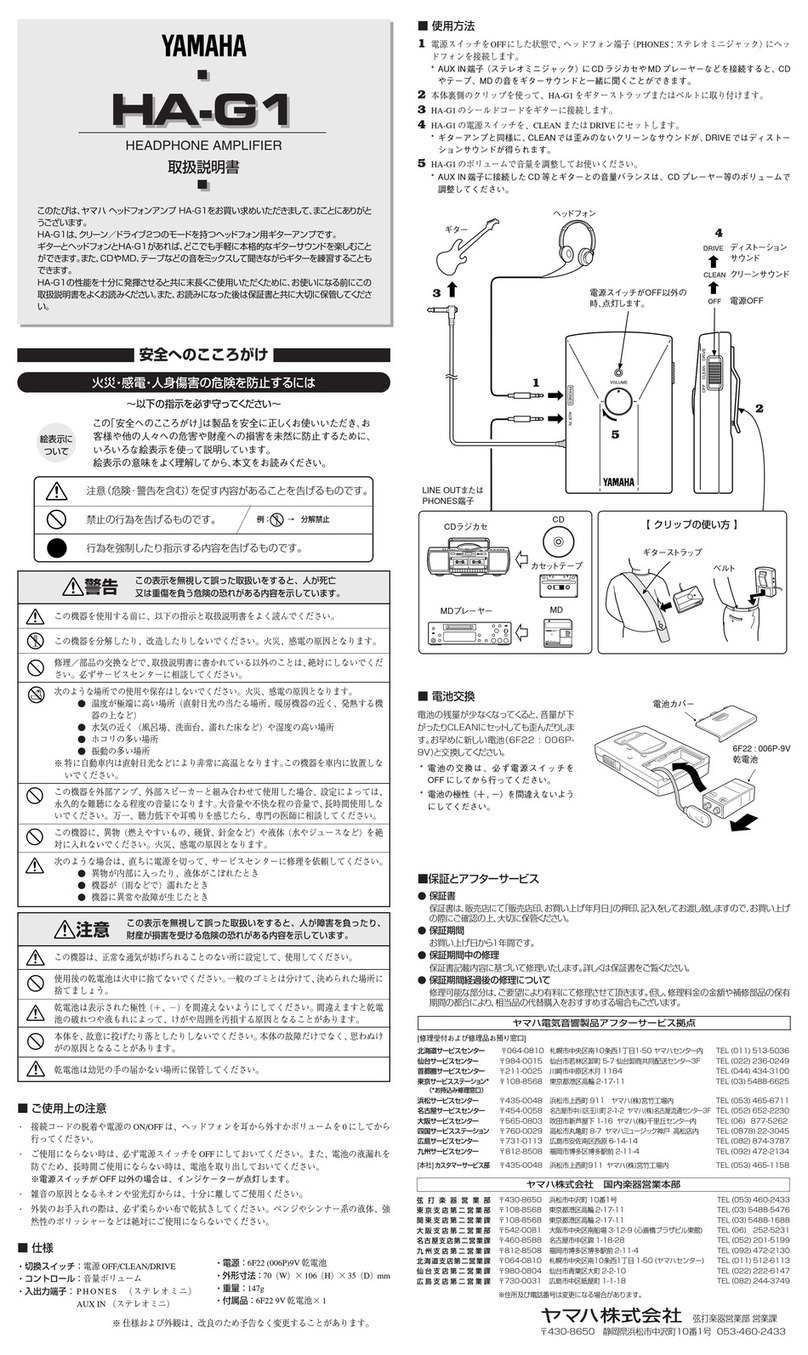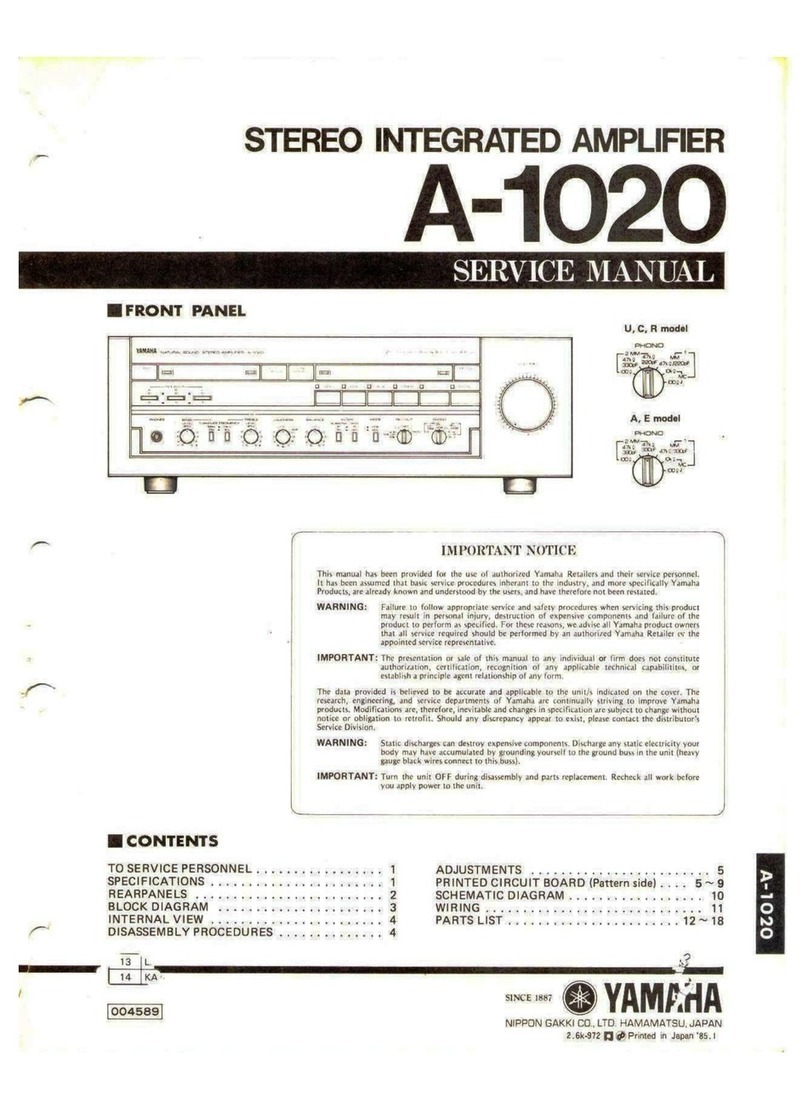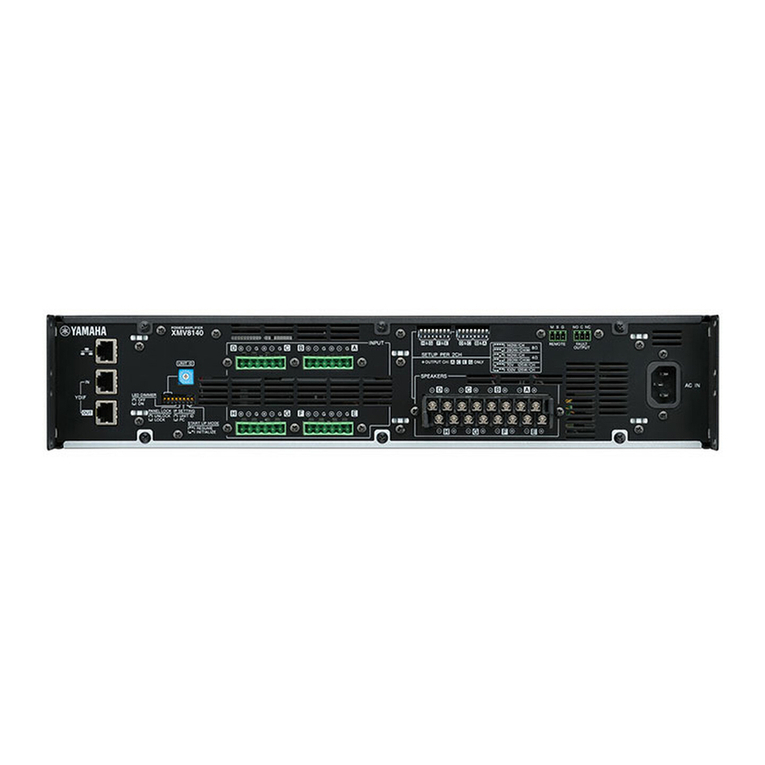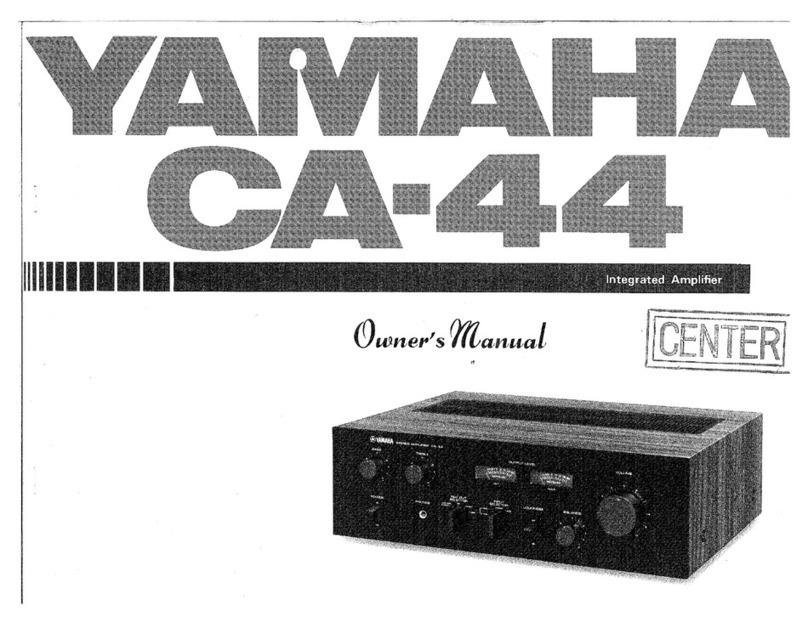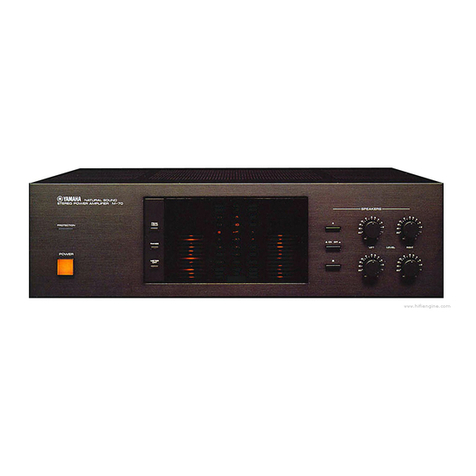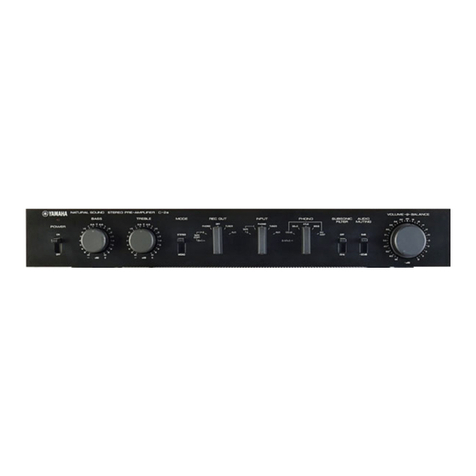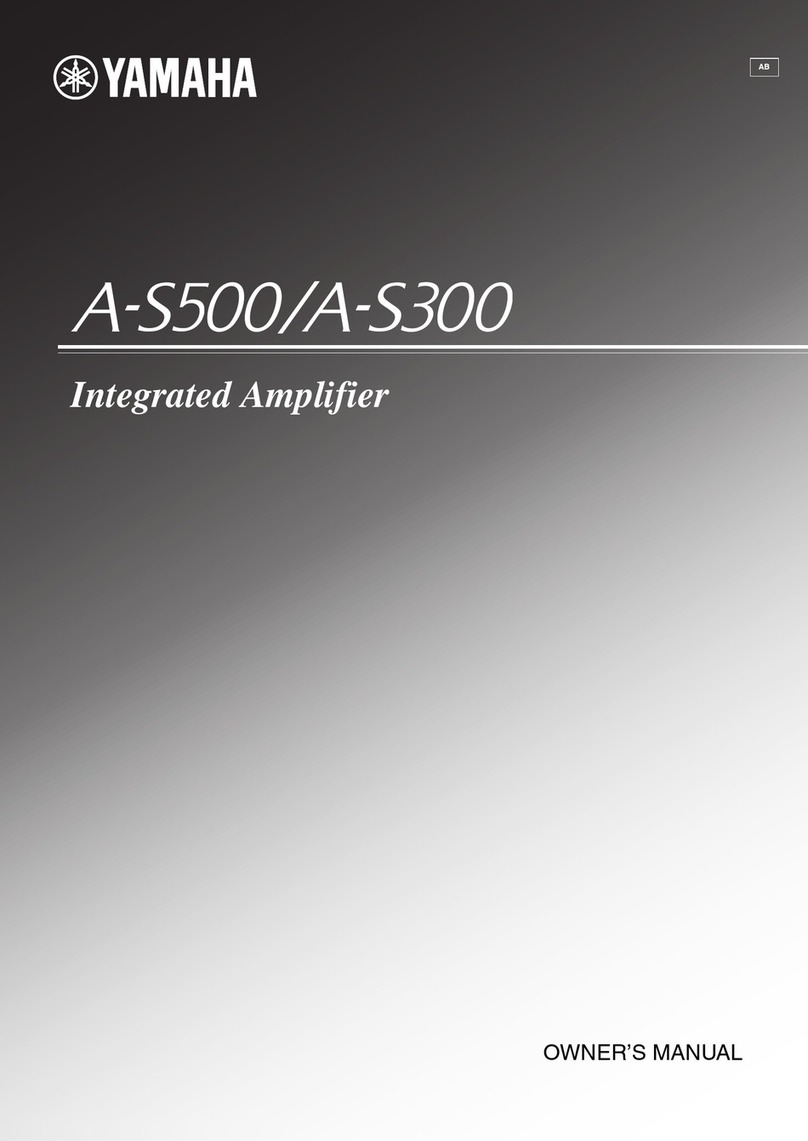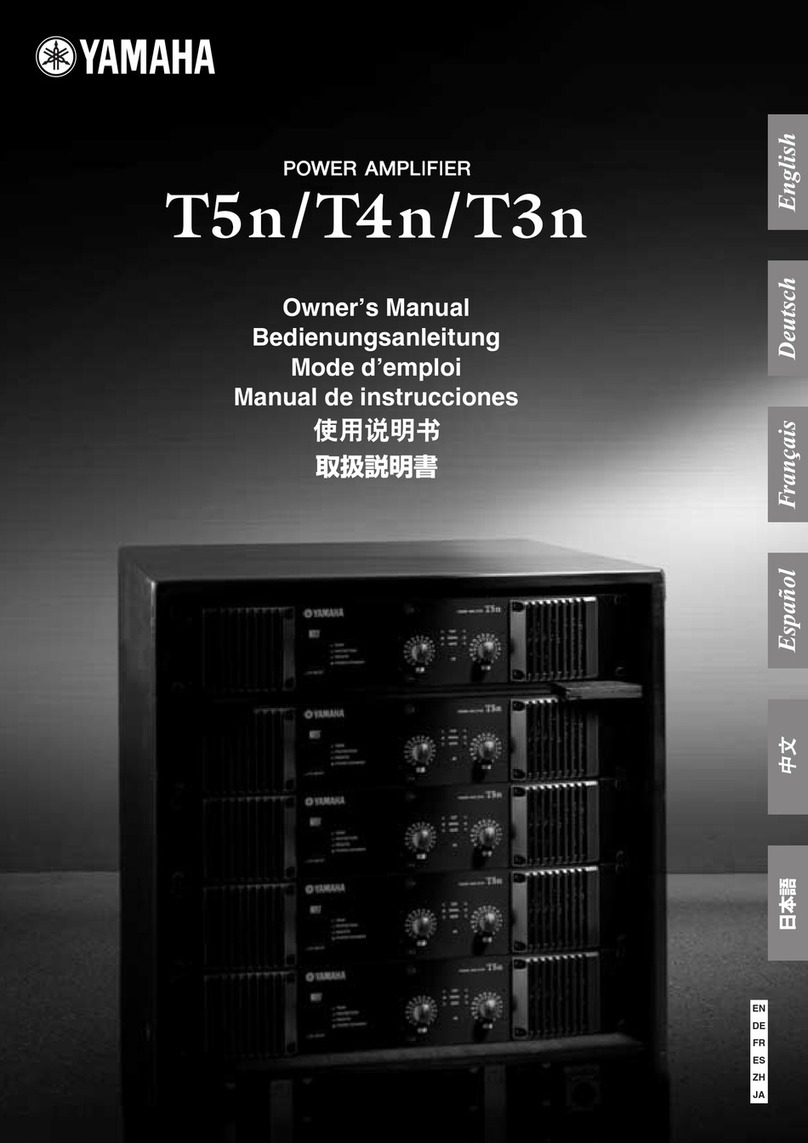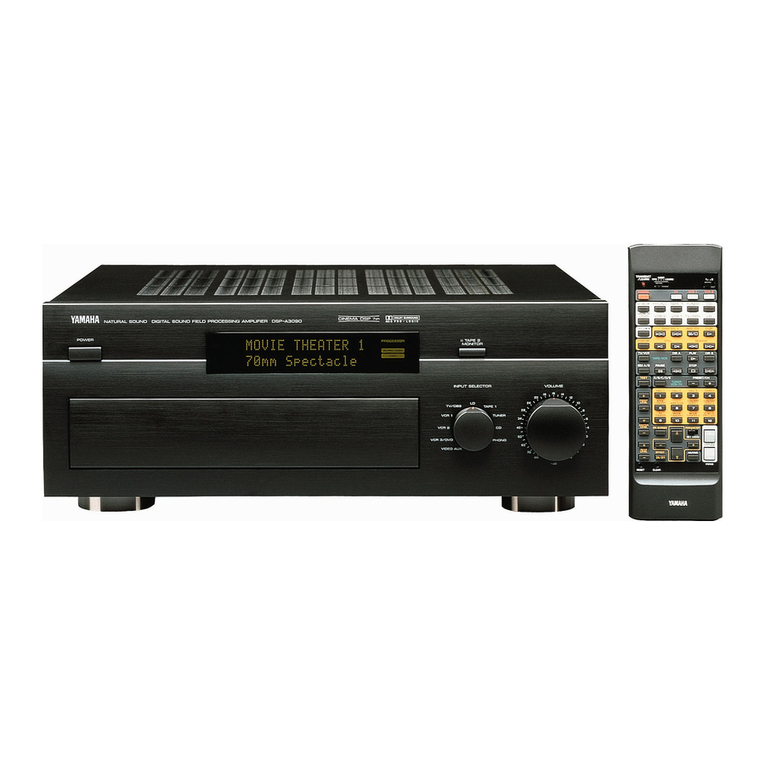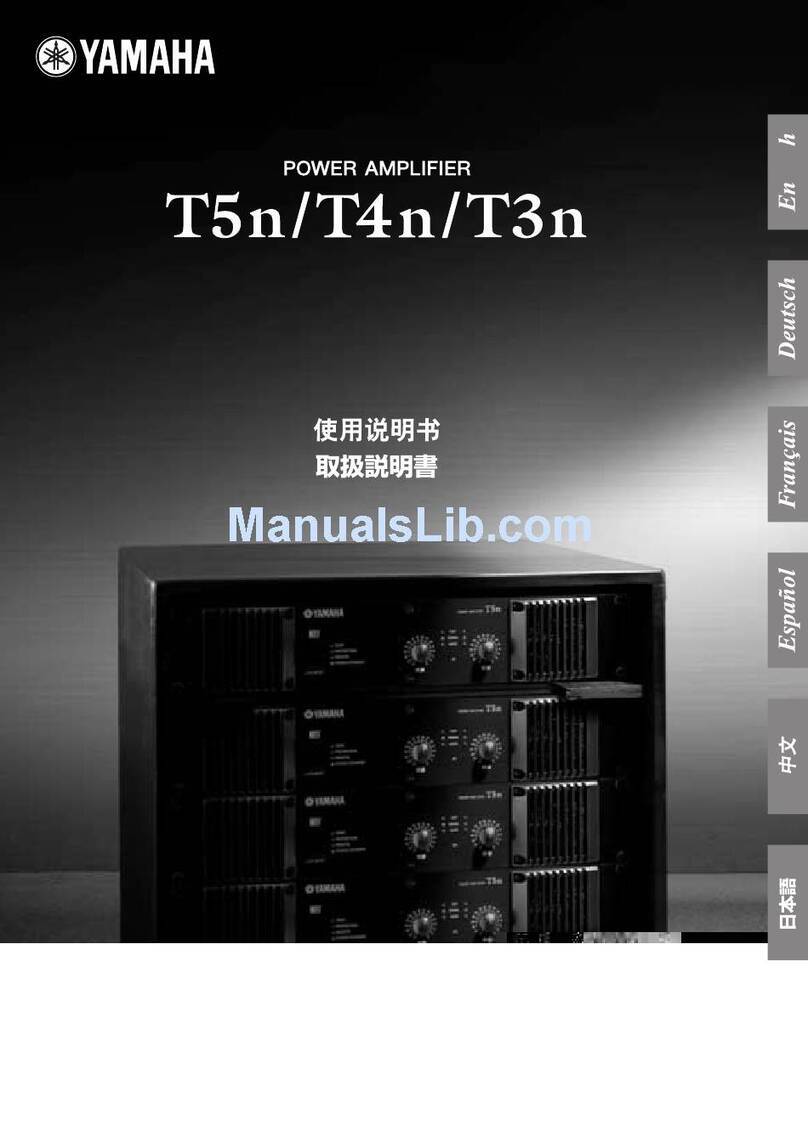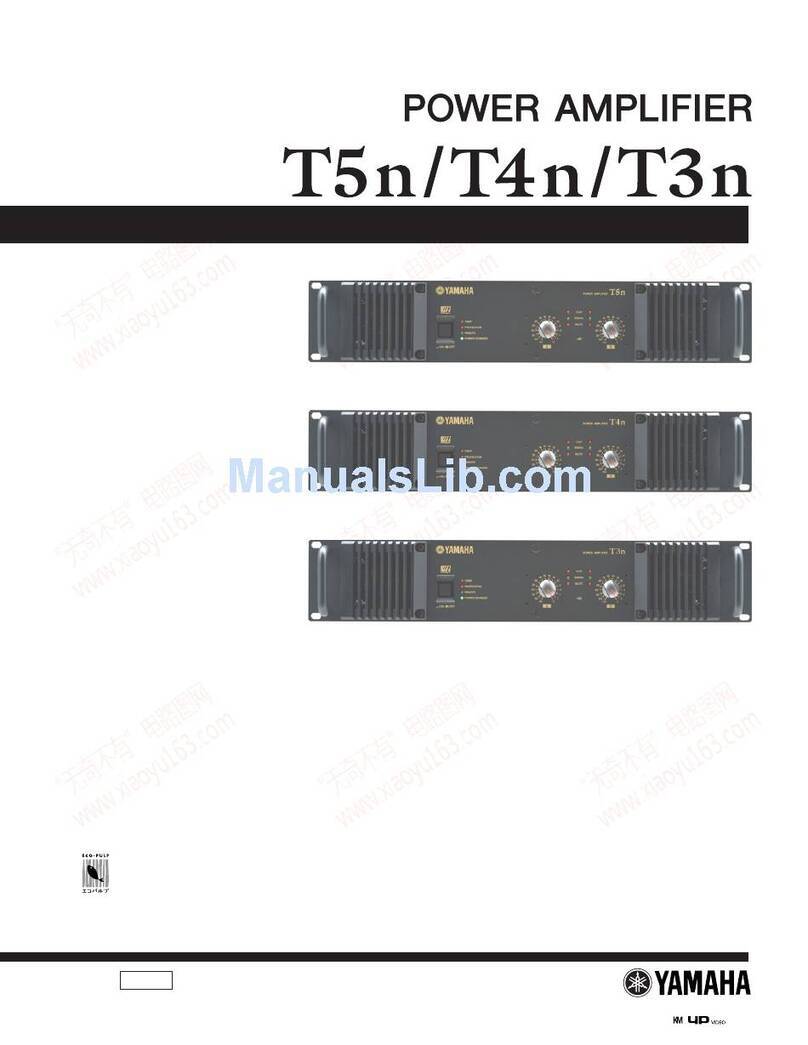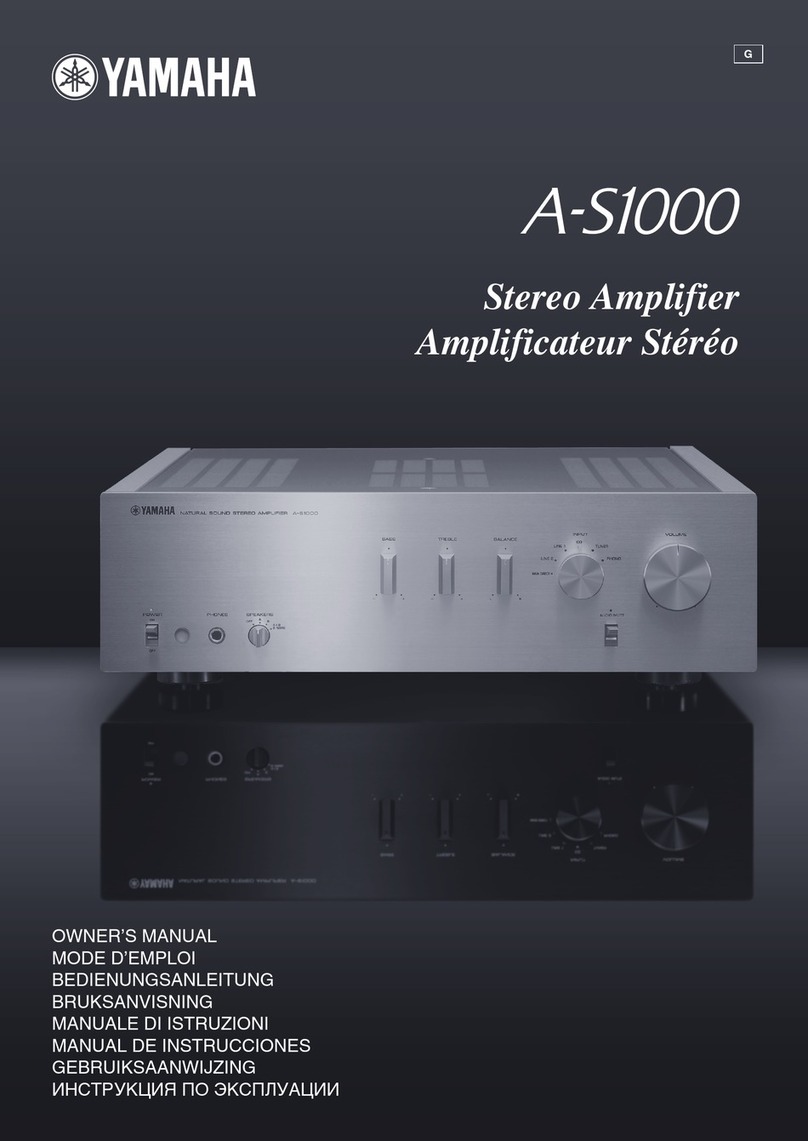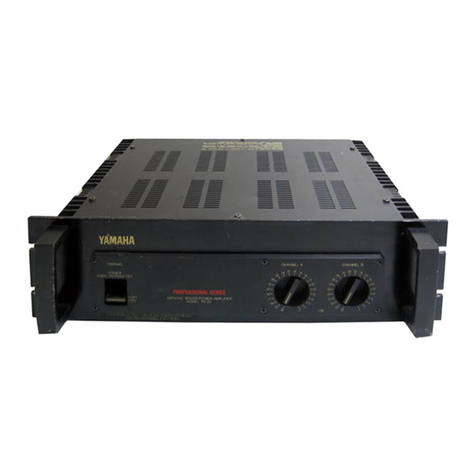
3
Precautions
—For safe operation —
WARNING
●Connect this unit’s power cord only to an AC outlet of the type
stated in this Owner’s Manual or as marked on the unit. Failure
to do so is a fire and electrical shock hazard.
●Do not allow water to enter this unit or allow the unit to become
wet. Fire or electrical shock may result.
●Do not place a container with liquid or small metal objects on
top of this unit. Liquid or metal objects inside this unit are a fire
and electrical shock hazard.
●Do not place heavy objects, including this unit, on top of the
power cord. A damaged power cord is a fire and electrical shock
hazard. In particular, be careful not to place heavy objects on a
power cord covered by a carpet.
●Do not scratch, bend, twist, pull, or heat the power cord. A dam-
aged power cord is a fire and electrical shock hazard.
●Do not remove the unit’s cover. You could receive an electrical
shock. If you think internal inspection, maintenance, or repair is
necessary, contact your dealer.
●Do not modify the unit. Doing so is a fire and electrical shock
hazard.
●If lightning begins to occur, turn off the power switch of the unit
as soon as possible, and unplug the power cable plug from the
electrical outlet.
●If there is a possibility of lightning, do not touch the power cable
plug if it is still connected. Doing so may be an electrical shock
hazard.
●If the power cord is damaged (i.e., cut or a bare wire is exposed),
ask your dealer for a replacement. Using the unit with a damaged
power cord is a fire and electrical shock hazard.
●Should this unit be dropped or the cabinet be damaged, turn the
power switch off, remove the power plug from the AC outlet, and
contact your dealer. If you continue using the unit without heed-
ing this instruction, fire or electrical shock may result.
●If you notice any abnormality, such as smoke, odor, or noise, or
if a foreign object or liquid gets inside the unit, turn it off imme-
diately. Remove the power cord from the AC outlet. Consult your
dealer for repair. Using the unit in this condition is a fire and
electrical shock hazard.
CAUTION
●Keep this unit away from the following locations:
- Locations exposed to oil splashes or steam, such as near cook-
ing stoves, humidifiers, etc.
- Unstable surfaces, such as a wobbly table or slope.
- Locations exposed to excessive heat, such as inside a car with
all the windows closed, or places that receive direct sunlight.
- Locations subject to excessive humidity or dust accumulation.
●Do not place the power cord close to a heater. It may melt, caus-
ing fire or electrical shock.
●Hold the power cord plug when disconnecting it from an AC out-
let. Never pull the cord. A damaged power cord is a potential fire
and electrical shock hazard.
●Do not touch the power plug with wet hands. Doing so is a
potential electrical shock hazard.
●This unit has ventilation holes at the front and rear to prevent the
internal temperature rising too high. Do not block them. Blocked
ventilation holes are a fire hazard.
In particular, do not
- place the unit on its side or upside down,
- place the unit in any poorly-ventilated location such as a
bookcase or closet (other than on the dedicated rack),
- cover the unit with a table cloth or place it on a carpet or bed.
●Allow enough free space around the unit for normal ventilation.
This should be: 5 cm at the sides, 10 cm behind, and 10 cm
above.
If the airflow is not adequate, the unit will heat up inside and
may cause a fire.
●To mount several of these units in a standard EIA rack, refer to
the rack mounting instructions on page 11.
●To relocate the unit, turn the power switch off, remove the power
plug from the AC outlet, and remove all connecting cables. Dam-
aged cables may cause fire or electrical shock.
●Use only speaker cables when connecting speakers to amplifier
outputs. Using other types of cables is a fire hazard.
●Turn off all musical instruments, audio equipment, and speakers
when connecting to this unit. Use the correct connecting cables
and connect as specified.
●Always lower the volume control to minimum before turning on
the power to this unit. A sudden blast of sound may damage your
hearing.
●Do not use this amplifier for any purpose other than driving loud-
speakers.
●If you know you will not use this unit for a long period of time,
such as when going on vacation, remove the power plug from the
AC outlet. Leaving it connected is a potential fire hazard.
Installation
Operation
In case an abnormality occurs during operation
Installation
Operation
